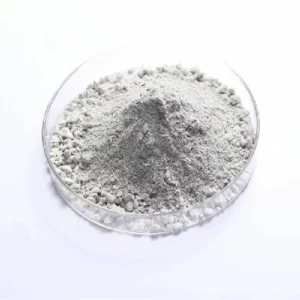The cost of gunning castable can vary depending on several factors, including the specific application, the size of the project, and the supplier. In general, gunning castable is a cost-effective option compared to other refractory materials, such as bricks and precast shapes.
Here are some reasons why:
Reduced Labor Costs: Gunning castable requires less labor compared to other refractory materials. The application process using a gunning machine is faster and more efficient than traditional methods, which can help to reduce labor costs.
Faster Installation: Gunning castable can be installed quickly and efficiently, which can help to reduce overall project time and costs. This is especially important in applications where downtime can be costly.
Customizable Mix Design: Gunning castable can be customized to meet specific application requirements. This includes adjusting the mix design to achieve desired properties, such as strength, density, and thermal conductivity. This can help to reduce waste and ensure that the material is used efficiently.
Lower Material Costs: Gunning castable typically requires fewer materials compared to other refractory materials, such as bricks and precast shapes. This can help to reduce material costs and overall project costs.
Reduced Maintenance Costs: Gunning castable has high strength and can withstand high temperatures and thermal shock. This means that it requires less maintenance compared to other refractory materials. This can help to reduce maintenance costs and increase the lifespan of the refractory lining.
Overall, gunning castable is a cost-effective option for many high-temperature industrial applications. Its fast and efficient installation, customizability, and reduced labor and material costs make it a popular choice for industries that require reliable and efficient refractory solutions. Gunning castable However, it’s important to consider the specific application and consult with a refractory expert to determine the most cost-effective solution for your needs.
How does the lifespan of gunning castable compare to other refractory materials?
The lifespan of gunning castable can vary depending on several factors, including the specific application, operating conditions, and the quality of the material and installation. In general, with proper installation and maintenance, gunning castable can have a similar lifespan to other refractory materials such as bricks or precast shapes.
Here are some factors that can influence the lifespan of gunning castable:
Operating Conditions: The operating conditions, such as the temperature, thermal shock, abrasion, and chemical exposure, can affect the lifespan of gunning castable. Higher temperatures and more severe operating conditions can cause more wear and tear on the material and reduce its lifespan.
Quality of Material: The quality of the material used for gunning castable can affect its lifespan. Higher-quality materials tend to have better durability and can last longer.
Installation Quality: The quality of installation can also affect the lifespan of gunning castable. Proper installation is critical for the material to perform as intended and have a long lifespan.
Maintenance: Regular maintenance can help to extend the lifespan of gunning castable. This includes regular inspections, repairs, and cleaning to ensure that the material is functioning as intended.
In general, gunning castable can have a similar lifespan to other refractory materials if it is installed properly and maintained regularly. However, it’s important to consider the specific application and operating conditions to determine the most suitable refractory material and ensure that it has a long lifespan. Consulting with a refractory expert can help to ensure that the most appropriate material is selected for the specific application, which can help to maximize the lifespan of the refractory lining.
